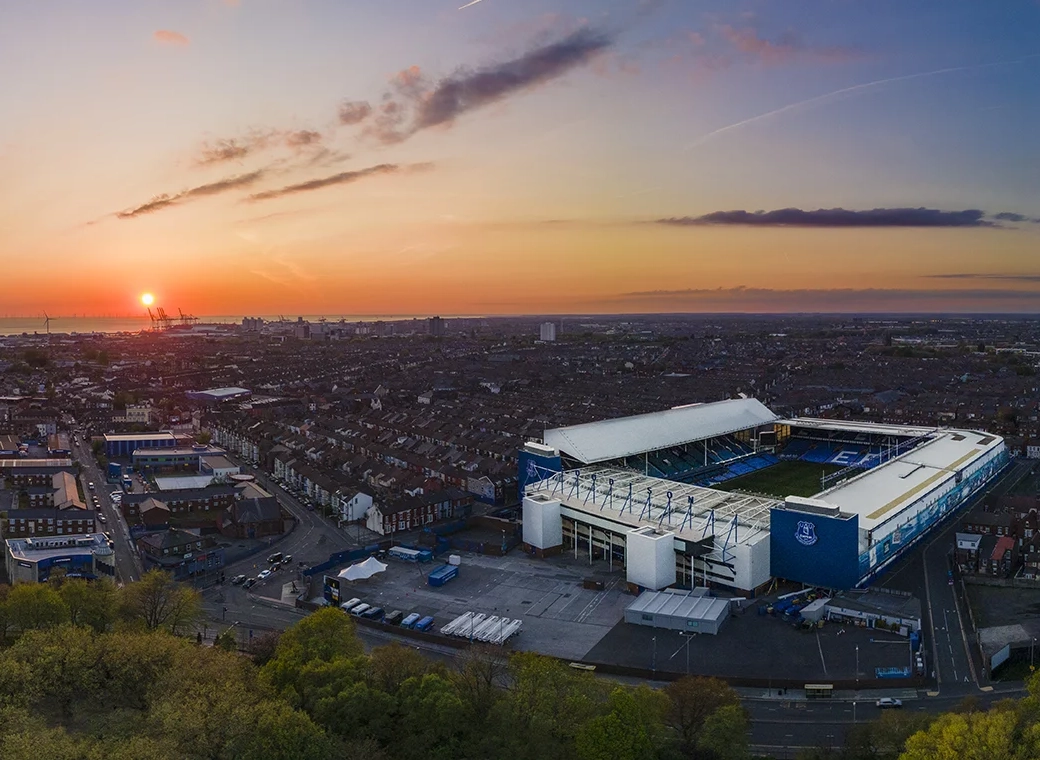I have been submitted for an IA (Individual Augmentee) in Kuwait for 6 months as a Transportation officer! What a Transportation Officer does in Kuwait, I don't know. I am not sure how long until I find out if I have been selected. Also found out I was submitted, but not chosen, for a 314 day IA in Afghanistan back in October!
You are using an out of date browser. It may not display this or other websites correctly.
You should upgrade or use an alternative browser.
You should upgrade or use an alternative browser.
Yay!!
- Thread starter Dylan
- Start date
- Status
- Not open for further replies.
Cal
Player Valuation: £40m
I have been submitted for an IA (Individual Augmentee) in Kuwait for 6 months as a Transportation officer! What a Transportation Officer does in Kuwait, I don't know. I am not sure how long until I find out if I have been selected. Also found out I was submitted, but not chosen, for a 314 day IA in Afghanistan back in October!
You dont wanna go to Afghanaistan do you?
Can I get it straight- you are being sarcastic about going to some of the terrifying places on the planet at the moment???!!
evertonianstu
Player Valuation: £10m
Ah, he'll be ok. Bet the money is good as well!
Can I get it straight- you are being sarcastic about going to some of the terrifying places on the planet at the moment???!!
Yes I am being sarcastic. Should I be shitting my pants? Who will that help? And it isn't that terrifying. Of course we have the MSM to thank for jazzing it up making it sound much worse than it is. Did you know that you are more likely to die on the roads of the United States than you are of being shot/blown up in Iraq!
If I go, I go, no two ways about it. Anyhow, Kuwait isn't all that bad, no real action going on there. Unless I am driving the convoys up tp Baghbad, those are the guys who get blown up by the IED's!!!
You dont wanna go to Afghanaistan do you?
Hell no! You live like tribesmen out there! In tents crapping in a hole in the ground! I'll pass on that, thanks.
SuitsBlue
Player Valuation: £50m
Yes I am being sarcastic. Should I be shitting my pants? Who will that help? And it isn't that terrifying. Of course we have the MSM to thank for jazzing it up making it sound much worse than it is. Did you know that you are more likely to die on the roads of the United States than you are of being shot/blown up in Iraq!
If I go, I go, no two ways about it. Anyhow, Kuwait isn't all that bad, no real action going on there. Unless I am driving the convoys up tp Baghbad, those are the guys who get blown up by the IED's!!!
is such cut throat honesty and humour commonplace in the SEALS?
have you ever fired a gun for the sake of the states in a was time scenario?
Ahh, I think you may be confused. If I was a SEAL then I would just about be permanently over there. As such, I am not a SEAL and only worked at a SEAL team, on the ASDS project. True we got included in some SEAL training, like being the OPFOR (that'd be opposing forces) for them to practice on, or jumping out of helicopters or supporting SDV ops, but I never went into combat with them. Nor would I want to. Those guys are crazy, they really are!
I have only ever fired guns for qualification purposes. Never for recreation.
I have only ever fired guns for qualification purposes. Never for recreation.
Seamus Colemole
Previously deathbyropeandglass
I have been submitted for an IA (Individual Augmentee) in Kuwait for 6 months as a Transportation officer! What a Transportation Officer does in Kuwait, I don't know. I am not sure how long until I find out if I have been selected. Also found out I was submitted, but not chosen, for a 314 day IA in Afghanistan back in October!
Traffic warden

SuitsBlue
Player Valuation: £50m
Ahh, I think you may be confused. If I was a SEAL then I would just about be permanently over there. As such, I am not a SEAL and only worked at a SEAL team, on the ASDS project. True we got included in some SEAL training, like being the OPFOR (that'd be opposing forces) for them to practice on, or jumping out of helicopters or supporting SDV ops, but I never went into combat with them. Nor would I want to. Those guys are crazy, they really are!
I have only ever fired guns for qualification purposes. Never for recreation.
that sounds really watered down.
was it a good time practicing with the seals? are they the ones referred to as jarheads or jugheads or whatever the term is?
I have been submitted for an IA (Individual Augmentee) in Kuwait for 6 months as a Transportation officer! What a Transportation Officer does in Kuwait, I don't know. I am not sure how long until I find out if I have been selected. Also found out I was submitted, but not chosen, for a 314 day IA in Afghanistan back in October!
Hello I beleive there is a postion for an admin going around here!

SuitsBlue
Player Valuation: £50m
Nope, the jarheads are Marines. Sometimes it was a right good time mucking around with the SEALs. Other times work downright sucked ass.
well, thats a hint at a story, so spill the beans.
not after any secrets of national security.
Suits, it is really nothing that interesting. With the ASDS we had some serious material issues and reliability concerns that required some long, long hours be put in to get the thing into the water. When we finally did get it into the water we would often be pulling out soon after as something else would have broken.
Everything had to be QA tested, every time we did anything it required a CWP (Controlled Work Package) which would outline the procedure, along with all of our QA forms documenting joint/connector torques, documenting the software installed (o-rings, the type of lubricant used). So if we were changing something out that took an actual 20 minutes to perform, it was accompanied by 3 hours of package writing, another hour of reviewing the package for accuracy an then getting it approved. Then the work would commence. Then you have to do a re-test ensuring everything is kosher. Then you can close the package out and put it in the water for it to break again.
Every single piece of anything that goes aboard ASDS gets 'off-gas' tested. Basically, the whole ASDS is a hyperbaric chamber. The concept being you pressurize the LIO (Lock In/Lock Out) to just above sea pressure and then you hydraulically open the lower hatch. The air pressure inside keeps the water out and the SEALs/divers hop out. So when you subject different materials to pressure they have the possibility of giving off gasses which can be toxic. So anything that is to be taken on-board gets sent off to a facility in Florida and tested of potential off-gassing. When everything is good it is certified to come on-board.
A major player in the suck-factor was our old batteries. We use 7 batteries to power the ASDS. The old ones were a silver-zinc chemistry. We used 128 cells in series to make up a half-string, which we have 2 of to make up 1 battery (eg Battery 1 is made up of 1A with 128 cells and 1B with 128 cells) Well, these batteries gave off lots of Hydrogen when being charged or discharged, so when in port we kept them on either an air or Nitrogen purge to prevent the H2 from getting to combustible levels. When we got ready to go underway we would pressurize the battery bottles with Nitrogen and keep the battery under a Nitrogen 'blanket'. These batteries also have a tendency to short 1 cell, which is real bad news, so we would have to take the battery down from the ASDS and open it up and pull it all apart to replace the one cell. So, we would take a whole day to do this. And at times we would get shorts on a daily basis.
This all went away about a year before I left with the introduction of our Lithium Ion batteries. Same setup (7 batteries etc etc) but there is no purge requirements with them. When we build them we put them on a N2 blanket and seal them up. These greatly increased our reliability and running time. They are also the largest Lithium Ion batteries on the planet, but by the company who built the ultra-reliable Lithium batteries for the Mars Rovers for NASA.
Anyhow, that should be enough to get you going for now Suits. Any more, just ask (and it is my kids bed-time, so duty calls!)
Everything had to be QA tested, every time we did anything it required a CWP (Controlled Work Package) which would outline the procedure, along with all of our QA forms documenting joint/connector torques, documenting the software installed (o-rings, the type of lubricant used). So if we were changing something out that took an actual 20 minutes to perform, it was accompanied by 3 hours of package writing, another hour of reviewing the package for accuracy an then getting it approved. Then the work would commence. Then you have to do a re-test ensuring everything is kosher. Then you can close the package out and put it in the water for it to break again.
Every single piece of anything that goes aboard ASDS gets 'off-gas' tested. Basically, the whole ASDS is a hyperbaric chamber. The concept being you pressurize the LIO (Lock In/Lock Out) to just above sea pressure and then you hydraulically open the lower hatch. The air pressure inside keeps the water out and the SEALs/divers hop out. So when you subject different materials to pressure they have the possibility of giving off gasses which can be toxic. So anything that is to be taken on-board gets sent off to a facility in Florida and tested of potential off-gassing. When everything is good it is certified to come on-board.
A major player in the suck-factor was our old batteries. We use 7 batteries to power the ASDS. The old ones were a silver-zinc chemistry. We used 128 cells in series to make up a half-string, which we have 2 of to make up 1 battery (eg Battery 1 is made up of 1A with 128 cells and 1B with 128 cells) Well, these batteries gave off lots of Hydrogen when being charged or discharged, so when in port we kept them on either an air or Nitrogen purge to prevent the H2 from getting to combustible levels. When we got ready to go underway we would pressurize the battery bottles with Nitrogen and keep the battery under a Nitrogen 'blanket'. These batteries also have a tendency to short 1 cell, which is real bad news, so we would have to take the battery down from the ASDS and open it up and pull it all apart to replace the one cell. So, we would take a whole day to do this. And at times we would get shorts on a daily basis.
This all went away about a year before I left with the introduction of our Lithium Ion batteries. Same setup (7 batteries etc etc) but there is no purge requirements with them. When we build them we put them on a N2 blanket and seal them up. These greatly increased our reliability and running time. They are also the largest Lithium Ion batteries on the planet, but by the company who built the ultra-reliable Lithium batteries for the Mars Rovers for NASA.
Anyhow, that should be enough to get you going for now Suits. Any more, just ask (and it is my kids bed-time, so duty calls!)
SuitsBlue
Player Valuation: £50m
wouldnt dare intrude on family time.
(you can tell me to [Poor language removed] off anytime, my feelings arent so easily hurt)
as and when...
"So anything that is to be taken on-board gets sent off to a facility in Florida and tested of potential off-gassing."
jesus H tap dancing christ, i cant say i'd fancy being a pioneer with tat technological breakthrough.
as for combustible levels of problematic fuel cells, the doubling up sounds like back up alternatives similar to the tri back ups certain nuclear instillations are required to run.
in all honesty i was interested in the actual nuts and bolts of going head to head with probably geared up maniacs trained and fed by the state to kill at command. britain has its own little division as well. (just in case)
(you can tell me to [Poor language removed] off anytime, my feelings arent so easily hurt)
as and when...
"So anything that is to be taken on-board gets sent off to a facility in Florida and tested of potential off-gassing."
jesus H tap dancing christ, i cant say i'd fancy being a pioneer with tat technological breakthrough.
as for combustible levels of problematic fuel cells, the doubling up sounds like back up alternatives similar to the tri back ups certain nuclear instillations are required to run.
in all honesty i was interested in the actual nuts and bolts of going head to head with probably geared up maniacs trained and fed by the state to kill at command. britain has its own little division as well. (just in case)
- Status
- Not open for further replies.









